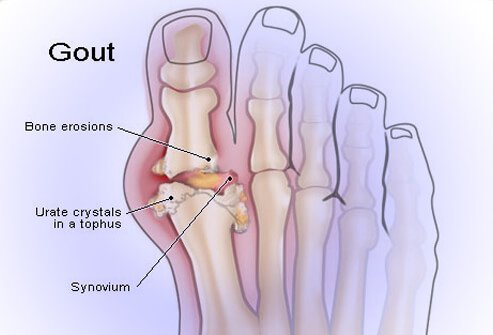Symptoms of gout usually strike unexpectedly. They typically do not last more than 10 days but may recur. Although less common, some patients may have chronic pain due to gout.
Symptoms of a gout attack may include:
Sudden, intense pain in a joint, typically the big toe or ankle, sometimes the knee, hand or wrist
Swelling, inflammation and a feeling that the joint is very hot
Extreme tenderness of the joint to even the lightest touch
Red or purple skin around the joint
In extreme cases alternating chills and fever
With recurring attacks soft fleshy growths may appear, called tophi, which are accumulations of uric acid crystals.
Over time gout attacks may occur more frequently, involve more joints, have more severe symptoms and last longer. Repeat attacks are common if the body's uric acid level is not kept under control.



 Contact Us
Contact Us







 Hospitals
Hospitals
 Doctors
Doctors
 Diagnostic
Diagnostic
 Pharmacy
Pharmacy
 Health Tips
Health Tips
 Blog
Blog

























Comments